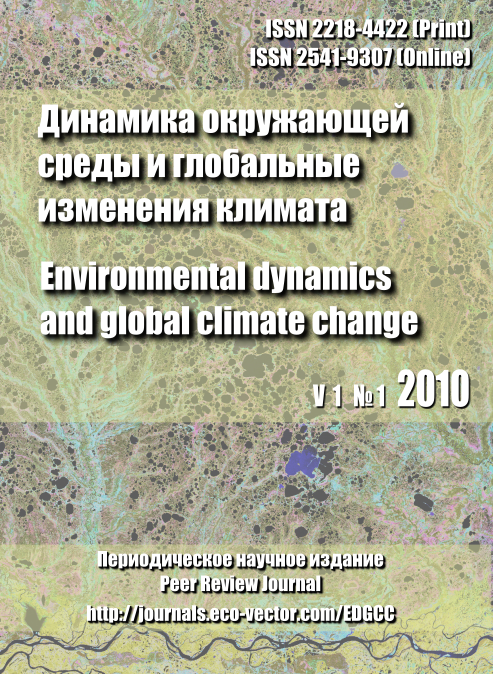An investigation of the peat decomposition in miresusing method of incubation of dry and wet samples
- Authors: Koronatova N.G.1
-
Affiliations:
- Институт почвоведения и агрохимии СО РАН
- Issue: Vol 1, No 1 (2010)
- Pages: 77-84
- Section: Articles
- URL: https://edgccjournal.org/EDGCC/article/view/6455
- DOI: https://doi.org/10.17816/edgcc1177-84
- ID: 6455
Cite item
Full Text
Abstract
In the paper two techniques of experimental studying of peat decomposition in three mire ecosystems of Bakchar complex (Western Siberia) are compared. The investigation was carried out in a raised bog, in a poor fen and in the transitional to the raised bog part of the poor fen. From each mire ecosystem a big monolith of peat was retrieved and litter bag experiment was designed. A half part of each monolith was dried, the dried up and the moist samples of peat were enclosed in synthetic litter bags, which were located in a peat deposit at 5-10 and 25-30 cm depth. The weight of dry peat samples were 2 or 4 g per litter bag. In order to estimate peat mass losses from moist samples, we leave 8 of them, dried and weighted. The weight of moist samples after drying were 2.46±0.03, 1.51±0.01 and 2.68±0.04 g in the raised bog, transitional part of the poor fen and the poor fen, respectively. The samples were collected several times during 1.5 year in 5-8 replicates, separated into peat and root fractions, dried up and weighted.
Peat mass losses from dried up samples were higher than from non-dried ones in 5 cases from 6. Reliability of a difference in the obtained estimates has been revealed almost in all cases in first three months of incubation, and in one year the difference is not become authentic. Pattern of peat mass dynamics during a year was similar for dried up and non-dried samples, especially in the raised bog and in the upper layer of the poor fen in which the correlation coefficient was 0.97-0.99. The factor analysis has shown essential influence of the place of peat incubation on peat mass losses (i.e. mire ecosystem and/or peat type) and it has not revealed the influence of using technique. Mass of roots penetrated in samples was higher in samples with non-dried peat. Thus, both methods showed comparable estimates, some overestimate of peat mass loss may be obtained using dried up samples. Absence of physical decomposition of peat moss material that usually take place during drying and low value of standard error allow to use non-dried peat for the litter bag experiment of peat decomposition.
Peat mass losses from dried up samples were higher than from non-dried ones in 5 cases from 6. Reliability of a difference in the obtained estimates has been revealed almost in all cases in first three months of incubation, and in one year the difference is not become authentic. Pattern of peat mass dynamics during a year was similar for dried up and non-dried samples, especially in the raised bog and in the upper layer of the poor fen in which the correlation coefficient was 0.97-0.99. The factor analysis has shown essential influence of the place of peat incubation on peat mass losses (i.e. mire ecosystem and/or peat type) and it has not revealed the influence of using technique. Mass of roots penetrated in samples was higher in samples with non-dried peat. Thus, both methods showed comparable estimates, some overestimate of peat mass loss may be obtained using dried up samples. Absence of physical decomposition of peat moss material that usually take place during drying and low value of standard error allow to use non-dried peat for the litter bag experiment of peat decomposition.
Keywords
About the authors
Natal'ya Gennad'evna Koronatova
Институт почвоведения и агрохимии СО РАН
Author for correspondence.
Email: coronat@mail.ru
Институт почвоведения и агрохимии СО РАН
References
- Иванов К.Е., Новиков С.М. (ред.). 1976. Болота Западной Сибири, их строение и гидрологический режим. - Л.: Гидрометеоиздат. - С. 9.
- Гмурман В.Е. 2001. Теория вероятностей и математическая статистика. - М.: Высшая школа. - 479 с.
- Козловская Л.С., Медведева В.М., Пьявченко Н.И. 1978. Динамика органического вещества в процессе торфообразования. - Л.: Наука. - 176 с.
- Коронатова Н.Г., Шибарева С.В. 2009. Изменение массы торфа в процессе его разложения на болотах Польши и Западной Сибири // Материалы Российской конференции «Восьмое сибирское совещание по климато-экологическому мониторингу» (г. Томск, 8-10 октября 2009 г.). - Томск: Аграф-Пресс. - С.247-249.
- Рокицкий П.Ф. 1973. Биологическая статистика. - Минск: Вышейш. школа. - 320 с.
- Frolking S. et al. 2001. Modeling northern peatland decomposition and peat accumulation // Ecosystems, 4, 479-498.
- Louis V.L.ST. et al. 2003. Mineralization rates of peat from eroding peat islands in reservoirs // Biogeochemistry, 64, 97-110.
- Turetsky M.R. 2004. Decomposition and organic matter quality in continental peatlands: the ghost of permafrost past // Ecosystems, 7, 740-750.
- Yefremov S.P., Yefremova T.T. 2001. Present stocks of peat and organic carbon in bog ecosystems of West Siberia // Carbon Storage and Atmospheric Exchange by West Siberian Peatlands / Bleuten W., Lapshina E.D. (eds.). - Tomsk. - pp. 73-78.
Supplementary files










